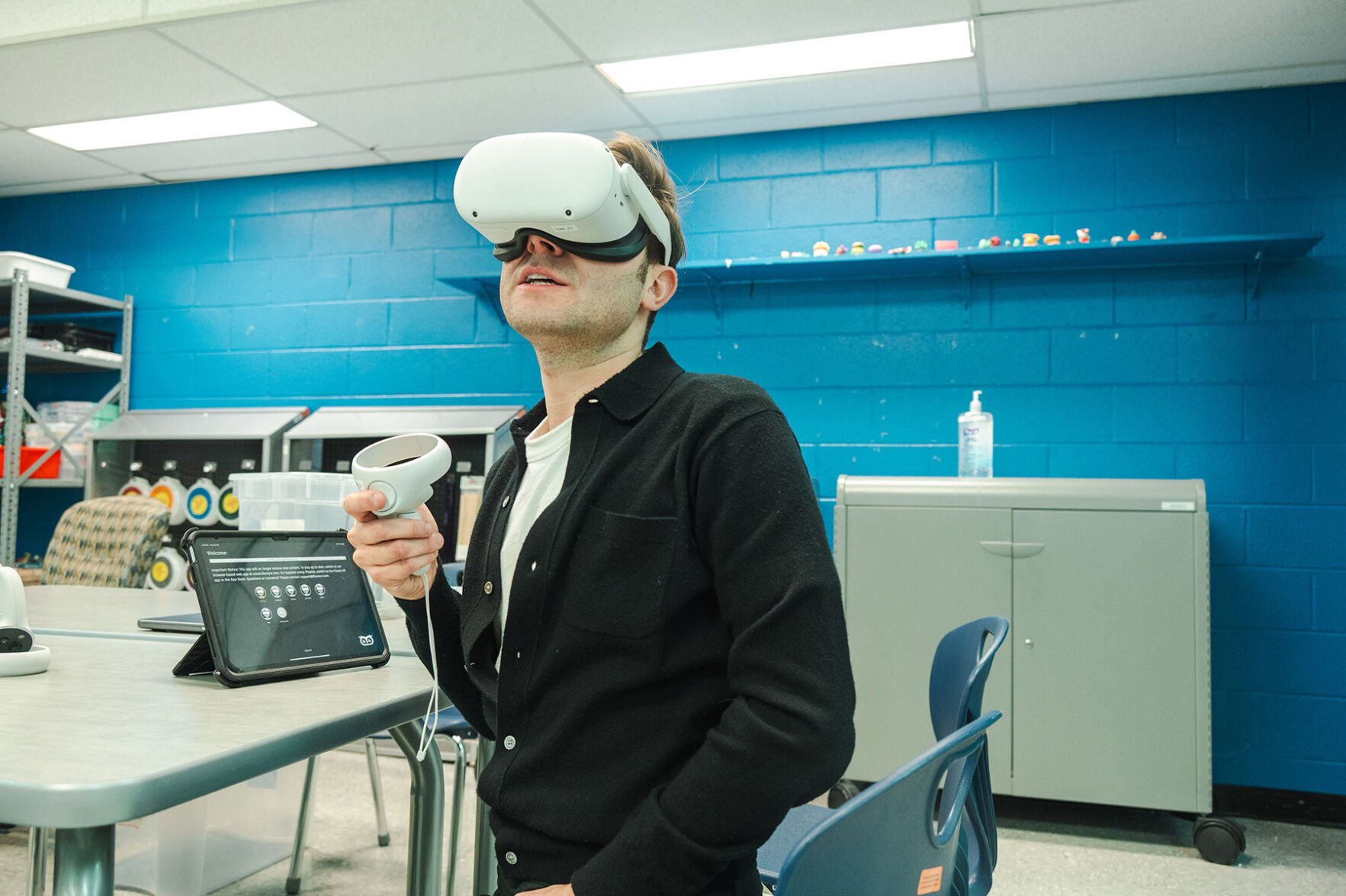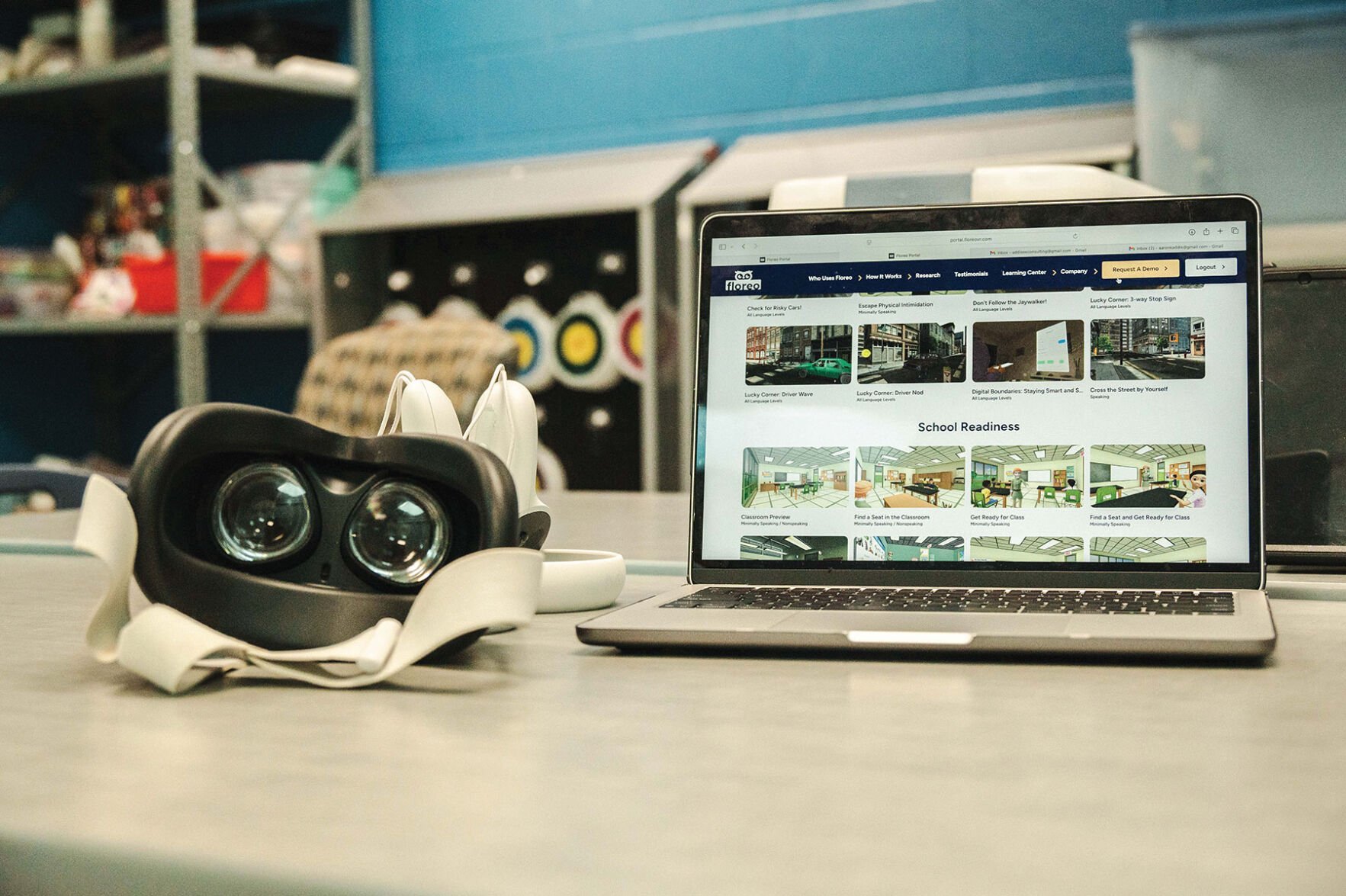As it turns out, practice can make perfect when it comes to everyday tasks like grocery shopping, taking the bus, crossing the street or even just raising a hand and waiting to be called on in school.
Using virtual reality, a neurodivergent person can practice such tasks without risk and before applying the experience to the real world. Tennessee recently became one of the first states to cover the use of VR therapy product Floreo through Medicaid as part of the state’s Enabling Technology program for people with disabilities.
Aaron Addis uses the Floreo virtual reality technology with young adults through Project SEARCH, a program that focuses on competitive employment for young adults with disabilities. Addis tells the Scene he did not have the time or resources to take students to the grocery store, for example, and even practicing crossing the street can be too high-risk. Virtual reality is a low-stakes way to introduce new skills.
“I’m always worried about, if you’re practicing something here in a video game, will you be able to do that skill in real life?” Addis says. “What I found was that about 80 percent of the time, students who did a skill here in virtual reality were able to then do that skill in the real world.”
Since its founding in 2016, Floreo has been proven to work across the spectrum of disability. According to Floreo founder Vijay Ravindran, the product has been used by children as young as 4 years old as well as adults, including individuals who have high support needs and those who operate more independently.

VR Therapy product Floreo
Floreo now has more than 200 lessons available, with the newest focused on online safety. They include school-related skills like raising one’s hand in class, and everyday skills like putting away groceries. But there’s also a safety element, with lessons like how to be safe around swimming pools, how to interact with the police and how to ride the bus safely. Floreo also recently developed AI characters so users can attempt role-playing conversations and job interviews.
Ravindran has a tech background, and the inspiration for the product came from his son, who is on the autism spectrum.
“The use of virtual reality seemed to spur new pretend play abilities that got me really interested in the technology as a new medium for therapy and training for neurodiverse children,” Ravindran says.
In 2017, the company landed a National Institutes of Health grant. Since then, thousands of kids and families have used Floreo, including 150 enterprise providers — autism therapy clinics, schools and nonprofits. And the list of available lessons is always growing.
“Once practitioners and parents get their hands on the technology and use it with their loved one, the ideas start flowing,” Ravindran says. “They know better than anyone else what are the biggest challenge areas, and what are the things that they’re doing today with traditional techniques that are not very effective.”
Addis adds, “No educational tool is perfect for a whole classroom of students. It’s just impossible. But there is a way to use and learn using this program for every student.”
State and Metro partner on stabilization center with Mental Health Coop
Addis uses a script to prompt the user. For example, he’ll direct them to look left, right and left again before crossing the street in virtual reality, and remind them if needed. At the end of the exercise, teachers receive a report on how the student did, including how long it took them to complete the lesson and their ability to master each facet of the lesson. Addis says he can use the technology with people who are nonverbal and use a communication device too, by projecting it on the classroom screen. A student who uses American Sign Language can receive prompts from their interpreter instead of Addis.
Milton Neuenschwander, the director of Enabling Technology at the Tennessee Commission on Aging and Disability, points out that virtual reality can’t as easily simulate the fluorescent lights at the grocery store or the lights and sirens of a police car — but it can simulate picking out groceries, or an interaction with a police officer. These small steps make a difference.
“Being able to practice it knowing that you’re in the comfort of your own home — that if you make a mistake, you can start all over — it relieves a lot of that anxiety, that stress, and helps little by little, build that confidence that people can practice until they feel the point where they’re comfortable enough to try it on their own,” Neuenschwander tells the Scene.
Ravindran says Tennessee is a leader in using this and other forms of technology for the disability population.
“There’s a handful of states that are really trying to roll out new and differentiated programs, and Tennessee is one of those leaders right now,” says Ravindran, who is based in Washington, D.C. “I think we’ve been really impressed with the state of forward-mindedness for this population.”






